What Is Strength For?
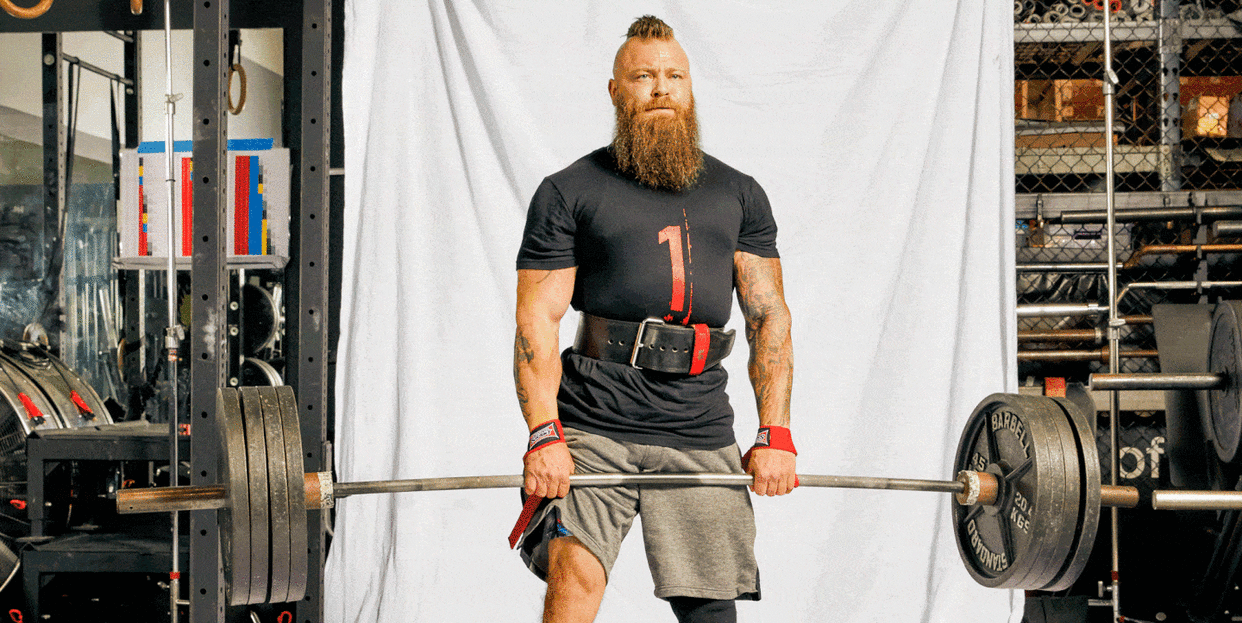
For most of the past two million years, men and women needed strength for basically one reason: to not die. But as horse, machine and computer power slowly replaced man power, the meaning of strength began to evolve. Now being strong has more cultural and social implications that ever. The connection between mind and body, and body and self-esteem, is complicated and intimate in ways our forebears couldn't imagine. Doctors and scientists are learning more about the health and longevity benefits of muscle, and even the government now recommends two sessions of strength training per week for everyone. As nerds and Marvel took over our lives and time became ever more scarce, muscle developed into a more desirable commodity. The result: swole Bezos. Today you could survive—thrive, even— without lifting anything heavier than your briefcase. So it raises the question: What is strength really for?
There are many answers, and these researchers, powerlifters, soldiers and everyday guys doing extraordinary things have some of them.
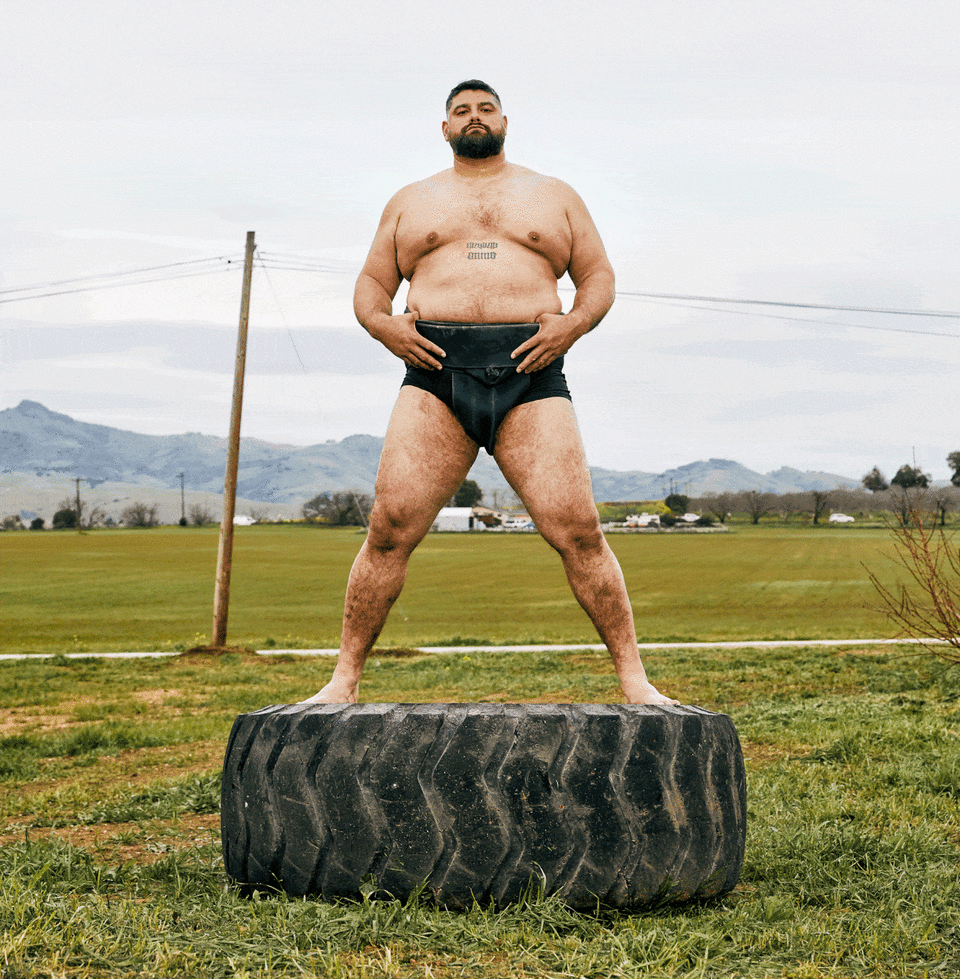
Roy Sims - IT Guy, US Sumo Champion, Brick Powerhouse
6ft 5in | 175kg | 37 years old
“Sumo wrestlers are more athletic than most people expect. We often carry a lot of fat, but it’s on top of a very solid, muscular structure. It’s just a different body style. We need strength, speed, balance and flexibility.
“In my sport, I’m trying to move a human who is my own size quickly, so I do a lot of explosive lifts using weights that are equal to my bodyweight. I’ll put, say, 160kg on the bar and do five back squats, front squats, or hang pulls. I keep the intensity high and try to make the bar move as fast as possible. I also do yoga, jiu-jitsu and Graeco-Roman wrestling, and I play basketball. I can even dunk.
“I’ve won a national championship at 172kg and competed at 180kg, but I like 165kg – at that weight, I felt faster but just as strong, and my energy in daily life was higher.
“What is it like to be my size? I don’t get to have a style. When I’m able to find a pair of shoes or jeans that fit, that’s what I buy. I have to put my work desk on blocks, and I use an oversized office chair. I’ve always wanted to work on cars, but I can’t get my big hands
in the engine very well.
“Some sumo wrestlers use that moment when they squat down before a match to intimidate or stare down their adversary. I always try to look right into my opponent’s heart and empty my thoughts. I completely relax and stay in the moment, so I can react better without attempting to anticipate how the match will go. Sometimes, we start and have a big clash, while other times, I’m able to move my opponent like butter. I’m never trying to hurt anyone. I’m just trying to manipulate their body with force.”
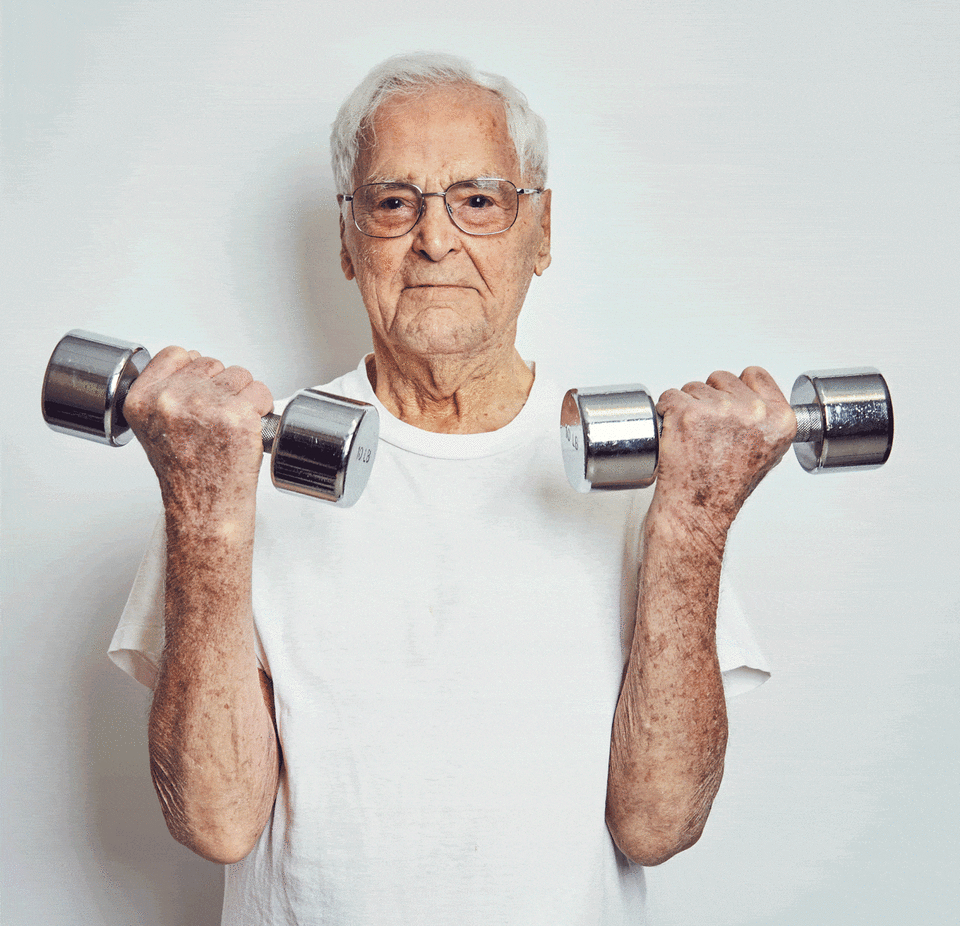
John Nagy - Prison Officer, Press-up King
5ft 6in | 70kg | 101 years old
“I just love exercise,” says chirpy centenarian John Nagy. “I’ve always been active and involved in sports – and I love the social aspect of training.” Nagy is part of a crew of about 30 mature swolesters, all of whom are over the age of 70. Every day, they train at the Physical Activity Centre of Excellence (Pace) gym at Ontario’s McMaster University, providing the oomph in an ongoing research project on strength and longevity.
“The data shows that being strong is a significant mediator in your long-term health,” says Dr Stuart Phillips, director of Pace and professor of kinesiology. “Muscle protects against cancer, enhances the survival chances of people with cancer and reduces the risk of mortality in those with hypertension, diabetes and metabolic syndrome.” A new study revealed that if you can do 40 or more press-ups in a row, you’re 96 per cent less likely to have heart problems over the next decade than someone who can’t manage 10.
Phillips expects government guidelines on strength training to be beefed up within five years: he believes that instead of suggesting two strength sessions per week, the US department of health will recommend three to five. “Strength really is a buffer to mortality,” he says. “More importantly, it extends your health span, so you can maintain a higher quality of life for longer.”
From around the age of 40, most people begin to lose muscle mass. It’s imperceptible at first but accelerates to about 1kg every two years by the time you reach 50. As you might expect, it is far easier to mitigate the decline by training more when you’re younger than it is to attempt to rebound when your muscle has started to waste away.
Nagy is living proof of that. He has trained regularly for the past 70 years and is around the same weight he has always been. Standing cable presses and press-ups are his favourite exercises; he performs them in workouts that last 90 minutes but include plenty of recovery time spent joking with his squad.
Nagy took a tumble two years ago, breaking his arm and losing a few teeth. “Being strong helped me to recover better,” he says. “I can still walk as well as I can because I train. Simple as that.”
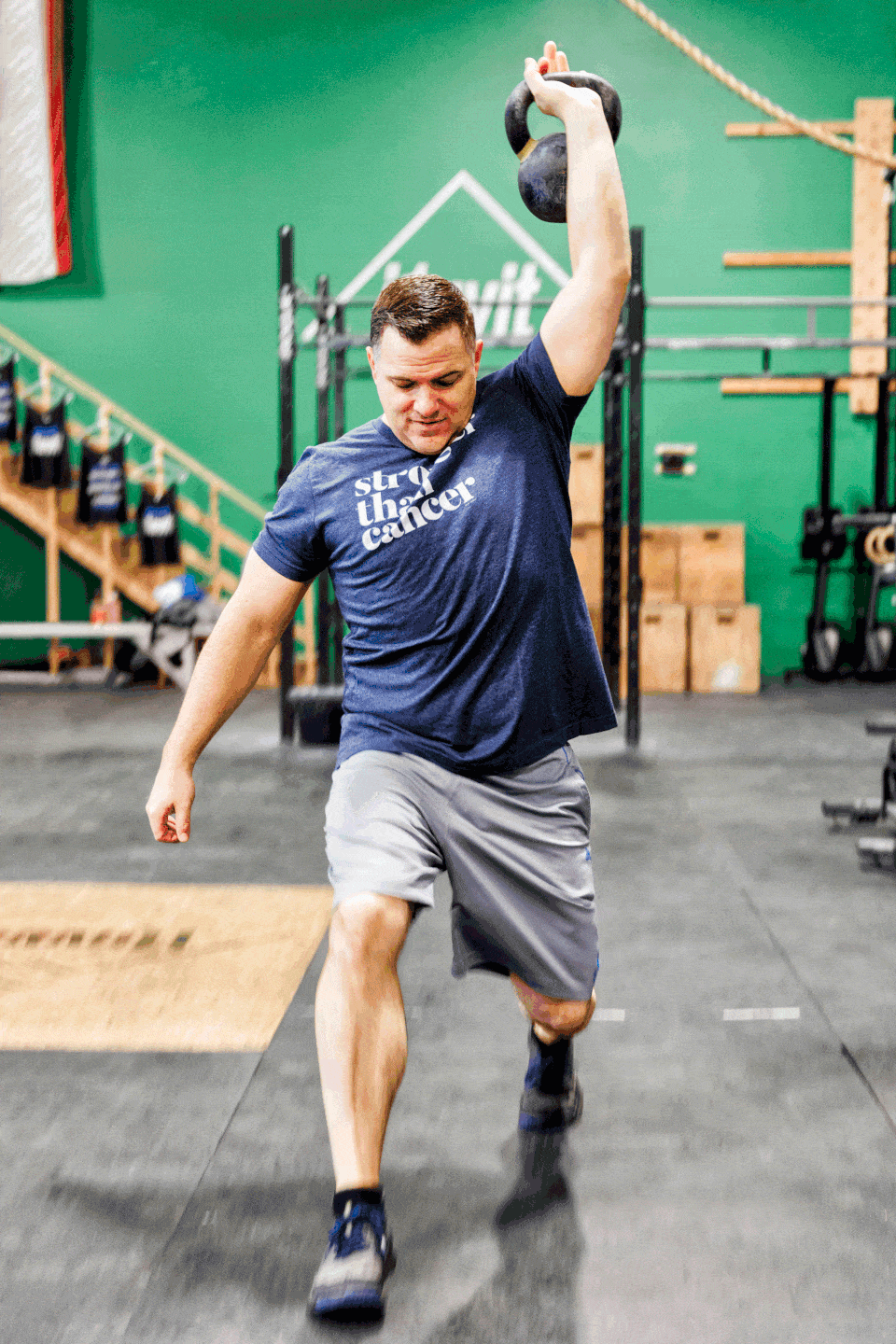
Rhett Bowlden - US Border Patrol Officer, Cancer Survivor
5ft 8in / 91kg / 39 years old
Five days after a tumour the size of a golf ball was removed from his backside, Rhett Bowlden took that backside into the gym. “Just for some fan-bike work,” he says, nonchalantly for a man who was diagnosed with stage 3 colon cancer in January.
It was a natural follow-up to the reps he’d done in the immediate aftermath of his operation. “They wanted me walking,” says Bowlden. “There was a chart on the wall that said 21 laps around the hospital was a mile. I’d do 21 laps each time I went to the toilet.”
The odds of a 39-year-old male developing colon cancer are small: about one in 10,000. Bowlden was unlucky. But how you live before, during and after a cancer diagnosis influences how you’ll cope.
You have a 50 per cent chance of developing cancer in your life. Will training alter that figure? Doctors can’t say for certain, but it can help you survive it. Patients with low muscle mass lived half as long and were 150 per cent more likely to experience chemotherapy side effects, according to the Lancet. Another study found post-cancer patients who did high-intensity weight training had better physical function and a higher quality of life.
Two years before his diagnosis, Bowlden was 18kg overweight. “I was ashamed to go out with my family,” he says. So, he set himself fitness goals: rowing 2km in under seven minutes; deadlifting double his bodyweight; completing 15 strict pull-ups. Spending five hours in the gym each week for a year, he took a minute off his 2km row and added 36kg to his deadlift for a 185kg max. “Because of what I’ve done, I believe myself when I say I’ll beat cancer,” says Bowlden.

Miles Taylor - Photographer, Strongman, Instagram Star
5ft 8in / 45kg / 24 years old
Nicolai Myers, a strongman champion, wasn’t sure if Miles Taylor’s shaky, slender body could handle the 14kg medicine ball. But he asked him to try to lift it anyway. Taylor, a young photographer from Maryland, quaked, flailed and shuddered as he bent over the ball, attempting to encircle it with his hands and bring it up to his chest. Attempt one: fail. Attempt two: fail. Three, four and five: fail, fail, fail.
Taylor has cerebral palsy, a condition that makes your muscles a mess. They can become too loose or too tight; they spasm and lack coordination. They do anything and everything you don’t want muscles to do when you’re trying to lift a weight. At its least severe, cerebral palsy affects one limb. At its worst, you live in paralysis and can barely communicate. Taylor is somewhere in the middle. He can walk and talk but imperfectly, and he had to go through extensive childhood therapy to do so.
Learning to lift was like figuring out a puzzle. Taylor slowly pieced together each requisite movement – hingeing at his hips, bending his knees, stabilising his spine, clasping his fingers, straightening his knee and hip joints – into one, bringing the ball off the ground and up to his chest. “That’s when I got bitten by the strongman bug,” says Taylor. He had come to the gym to photograph a competition, but he left as its newest member. That was just over a year ago.
“For me, the hardest part of working out has been control,” says Taylor. “I have to focus on every muscle and every movement to do any lift.” On Taylor’s first deadlift, Myers had to steady the new recruit from falling as he practised form with an unweighted 15kg bar. “His body will never be able to get in the traditionally correct position for most lifts,” says Myers. “With every lift, we go to the drawing board and figure out where he’s the strongest and most stable, so he’s safe.”
Taylor first started going to the gym once a week. Within a few months, however, he was a daily visitor. “I now realise the strength I have, and I want to keep getting stronger,” he says. “I’m a very competitive person.”
In the winter, Taylor hunched over a barbell and ground out a 90kg deadlift, sharing the video with his Instagram followers. The video promptly took off. What the world didn’t see in the 30-second clip was how much Taylor’s gym strength has benefited his daily life. “When I photograph activities, I’m much more stable and have more endurance,” he says. Simple tasks that most people take for granted – such as carrying a pot of water to the stove – are easier, too.
Fine movements are still tricky. “He has a harder time putting on his lifting belt than he does deadlifting 90kg,” says Myers, laughing. But he’s got help for that. “The gym community is like my second family,” says Taylor. “We do group workouts, and the atmosphere is amazing. It pushes me to keep working.” His next challenge is to lift a 45kg concrete stone and carry it across the gym. Myers is confident that he’ll nail it in no time. “Miles just keeps getting stronger,” he says.
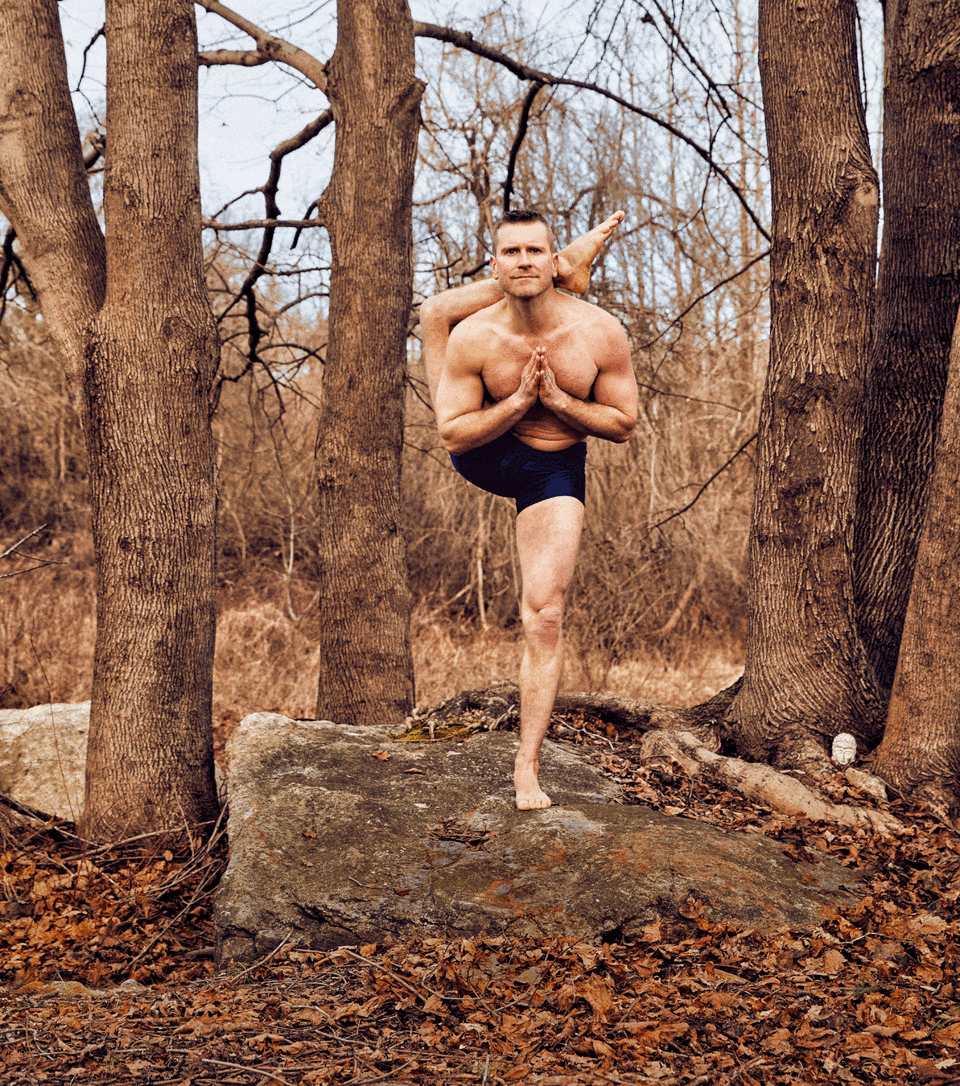
Eddie Hall - Yoga Champion, Consummate Poseur
5ft 10in / 75kg / 40 years old
“I played [American] football and ran at school – I’ve always been athletic. Even so, I found my first Bikram yoga class physically exhausting and had to sit during a few of the postures. But I loved the challenge. I came back the next day and have continued to come back. That was in 2009.
“Only half of competitive yoga is about flexibility. The other half is about strength. I do yoga five or six days a week, but I make sure that I train for strength on a few days, too. I usually do total-body workouts, 12-20 reps. I need muscle endurance, so I can contract my muscles to maintain stillness and balance in the postures.
“Every yoga posture has a corresponding inhale and exhale. I do the same breathing practice with lifting. For instance, if you’re doing a curl, you inhale as you lift and exhale as you lower. Moving with your breath helps you to lengthen or contract the muscle, which gives you better results.
“If you’re making weird faces while you’re lifting or doing yoga, it’s a sign that you’re not breathing correctly. This will throw off your form: if you’re straining your face, you’re straining your joints, too. Instead, you need to relax your face and breathe in and out deeply through your nose.
“Holding a challenging yoga pose while breathing steadily has also taught me to stay calm and breathe through uncomfortable situations in my everyday life. It has made a huge difference in helping me raise my nine-month-old son and also deal with annoyances, like traffic or conflicts at work. It helps me stay out of a negative mindset. It gives me mental strength.”
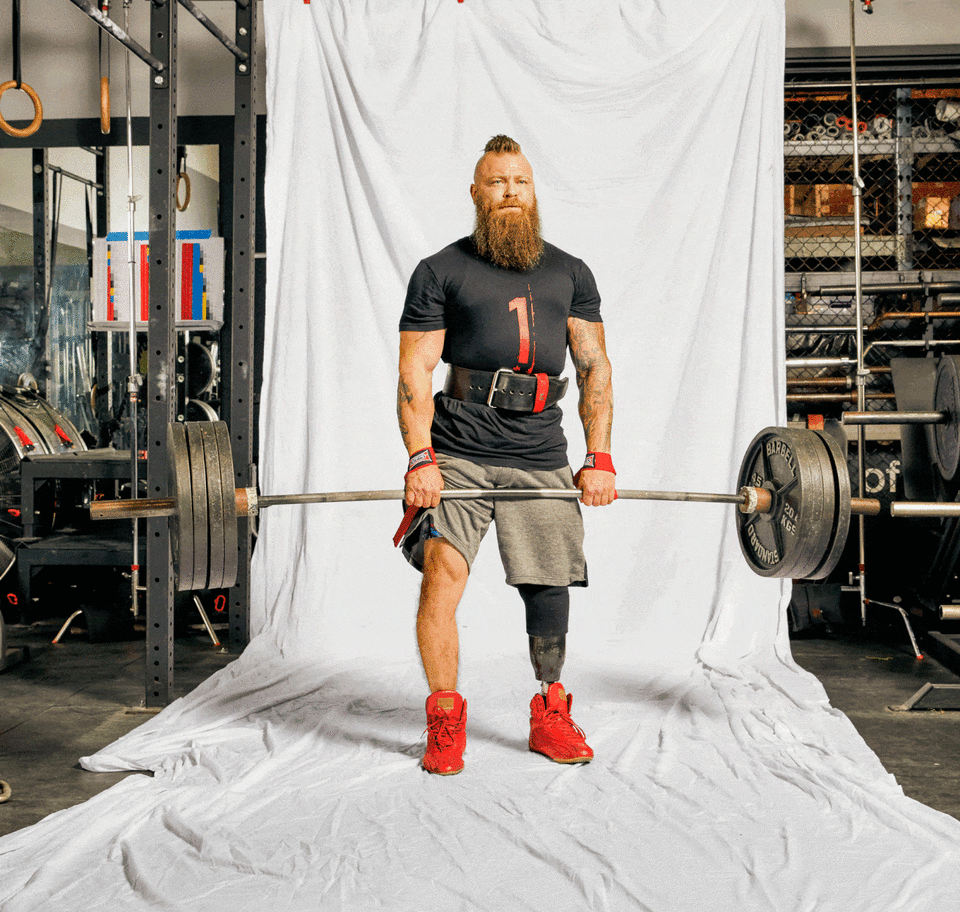
KC Mitchell - Afghanistan War Veteran, Father, Powerlifter
6ft / 110kg / 34 years old
KC Mitchell hit rock bottom at the happiest place on Earth: Disneyland. The army veteran and amputee had planned three days there with his wife and daughter, but his agony was inescapable. He would stand in line, feel a raging pain, become anxious, pop some painkillers, then repeat.
None of this was surprising. Mitchell had spent most of the previous 12 months playing video games alone while bingeing on Doritos, beer and morphine – a habit that turned him into an addicted mess.
So, they cut short the trip, which was meant to celebrate his daughter’s second birthday. “It upset me terribly,” says Mitchell. “I wasn’t living up to the person and dad I wanted to be.” A fifth of soldiers who have done tours of Iraq and Afghanistan return with post-traumatic stress disorder (PTSD); its symptoms can include depression, irritability, addiction and self-destructive behaviour. Among amputees, however, 66% show symptoms of the condition.
“Disneyland was my reckoning,” says Mitchell. “When I got home, I flushed away every single narcotic. I accepted that I’d always be in pain, and that was that.” Three days of nauseating withdrawal followed, after which Mitchell used the momentum of his newly reclaimed sobriety to haul himself to a gym.
“I was insecure to start with,” he admits. “I wore sweatpants to cover my leg.” Nonetheless, he began to go every day, making friends whom he tasked with “ensuring I keep coming”. Within months, he was walking stronger. “I didn’t have that hitch in my step, and I generally felt better,” he says. With his daughter’s third birthday looming, he knew what he had to do.
“I paid for the trip up front,” he says, “and achieved peak Disneyland.” Pumping iron pulled Mitchell out of both physical and mental holes, strengthening his outlook as well as his wounded body. But that was just the beginning. In 2015, Mitchell became interested in competitive powerlifting. The sight of a man with one leg doing heavy compound lifts prompted bewildered looks, but Mitchell didn’t care.
Squatting was the hardest. When the weights get heavy, you need to “spread the floor”, pushing out with your feet and bending at the ankles as you lower yourself – difficult to do with a prosthesis. It took Mitchell a year to be able to use regulation form, in which your hips drop below your knees.
In 2017, Mitchell became the first amputee to compete in a full powerlifting competition. He squatted 197kg, benched 192kg and deadlifted 272kg. “I’m doing things I never thought I’d be capable of when I got blown up,” he says. His journey has also made him reassess what it means to be diagnosed with PTSD. “I’ve been through some shit. But I hate that label – it makes me sound like I have an incurable virus. I call it ‘post-traumatic self-growth’ instead.”
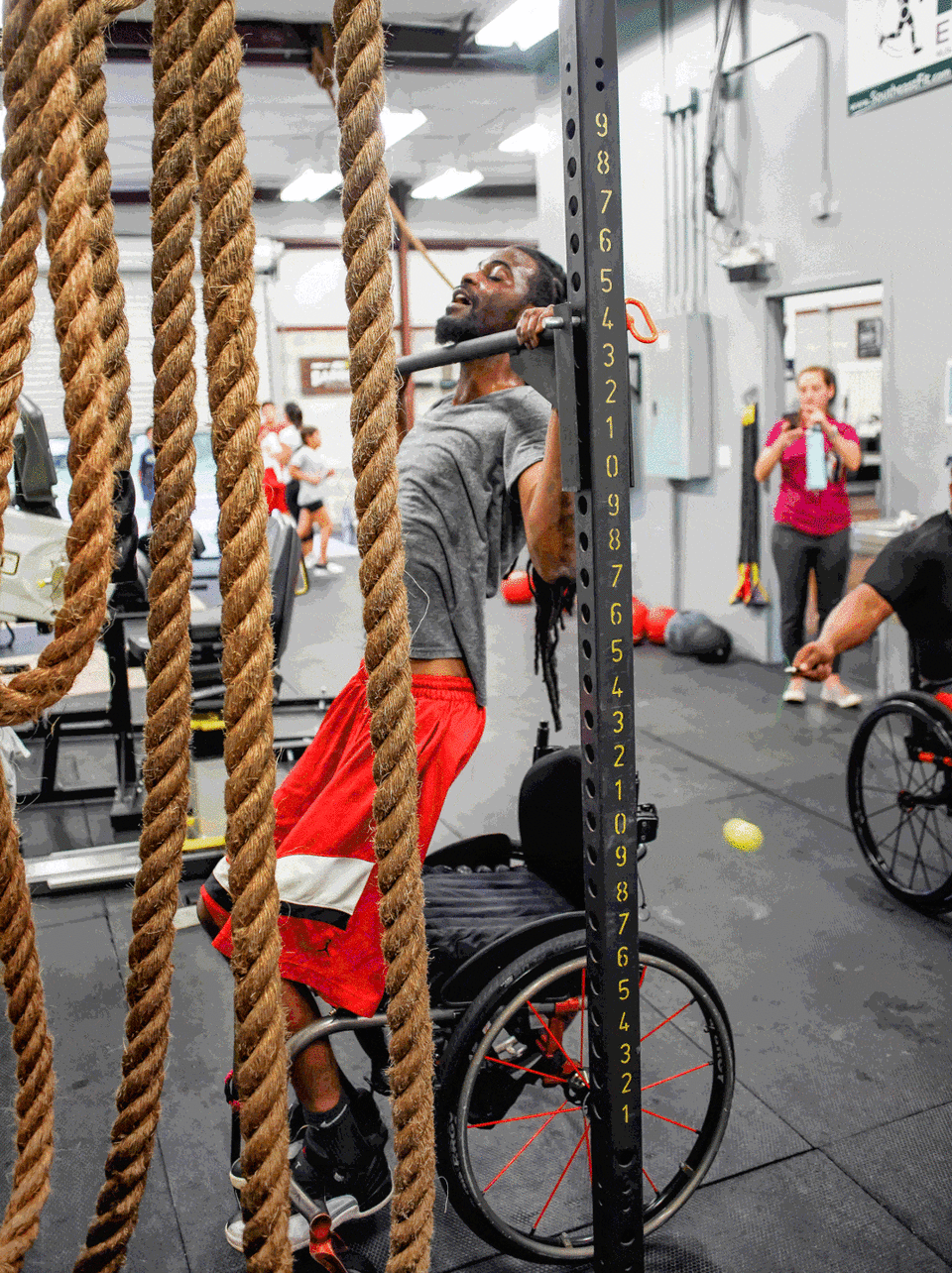
CJ Bellamy - HR Officer, Adaptive Athlete
6ft 3in / 73kg / 29 years old
One hot night in 2006, the 17-year-old Bellamy was out with his basketball team when they ran into a gang, one of whose members took out a gun and squeezed the trigger. A bullet entered Bellamy’s shoulder, nicked his spine and exited his chest. He hasn’t moved his legs since.
“When they told me I’d be confined to a wheelchair, I was, like, ‘Nah, I’ll be back on the basketball court before long,’” he says. “But that didn’t happen. My mind went to dark places. I stayed at home. I didn’t do anything at all.”
Soon, his family members were applying tough love. “You’re partially paralysed, not dead,” they said. So, he rolled himself out into the world and found that he could still play wheelchair basketball. He began trying out local gyms and ended up at a CrossFit box that specialised in training athletes with spine injuries.
“I was doing basic pull-ups and stuff, but they introduced me to so many different movements,” says Bellamy. He learned how to do a ring muscle-up, then moved onto overhead presses, snatches and more. It was a physical assault – and a revelation.
“Since then, I’ve pushed myself,” says Bellamy. “In the beginning, I could do five pull-ups; now, I can do 20. And the benefits carry over to everyday life. I have more energy. It makes daily challenges – like getting out of my wheelchair, or just moving things around – so much easier.”
When Bellamy isn’t training, he explores the world with his three-year-old niece. “She loves running outside. My training has given me the strength and endurance to keep up with her,” he says. “I can push my chair through areas that aren’t usually accessible to people with disabilities like mine.” Indeed, Bellamy is now the one pushing his family to be more active and meet people. The tables have turned.
“Some people in my situation aren’t very sociable because the wheelchair becomes a barrier,” he says. “But I feel comfortable now. As a result, I’m more convivial. In many ways, I’m more able than I’ve ever been.”
Like this article? Sign up to our newsletter to get more articles like this delivered straight to your inbox.
You Might Also Like


